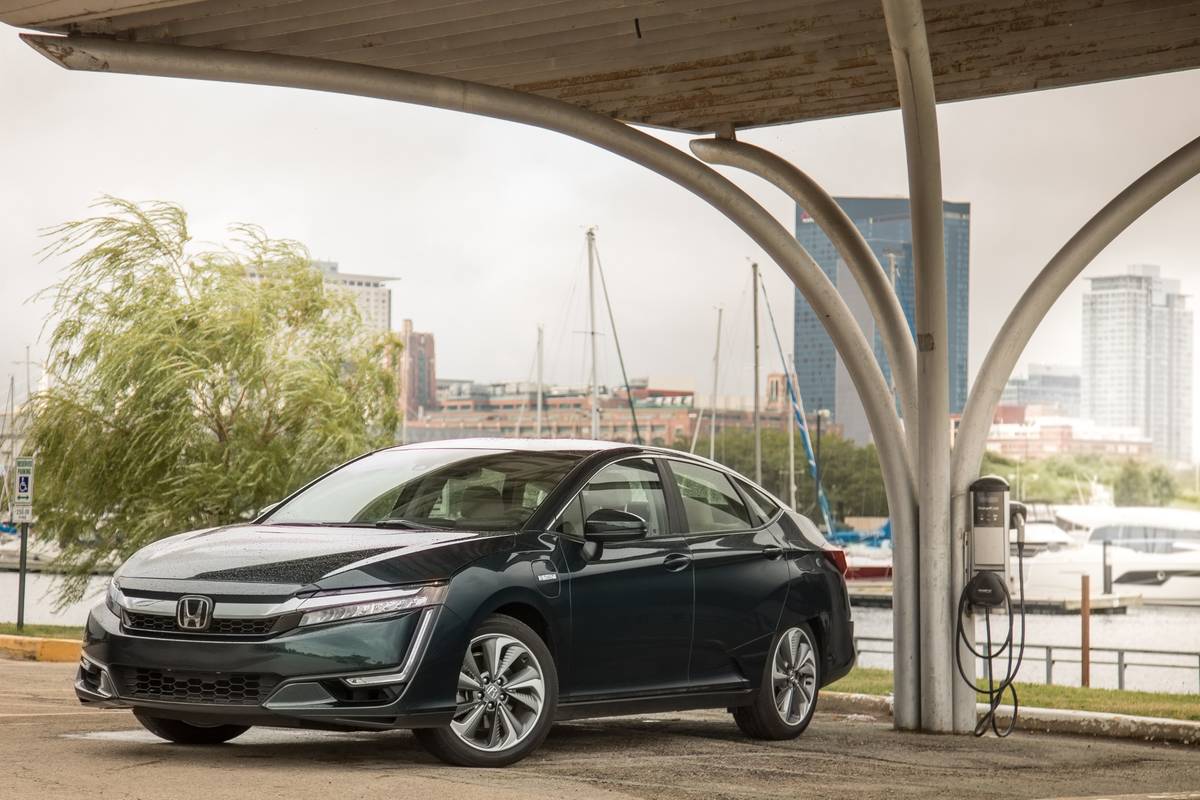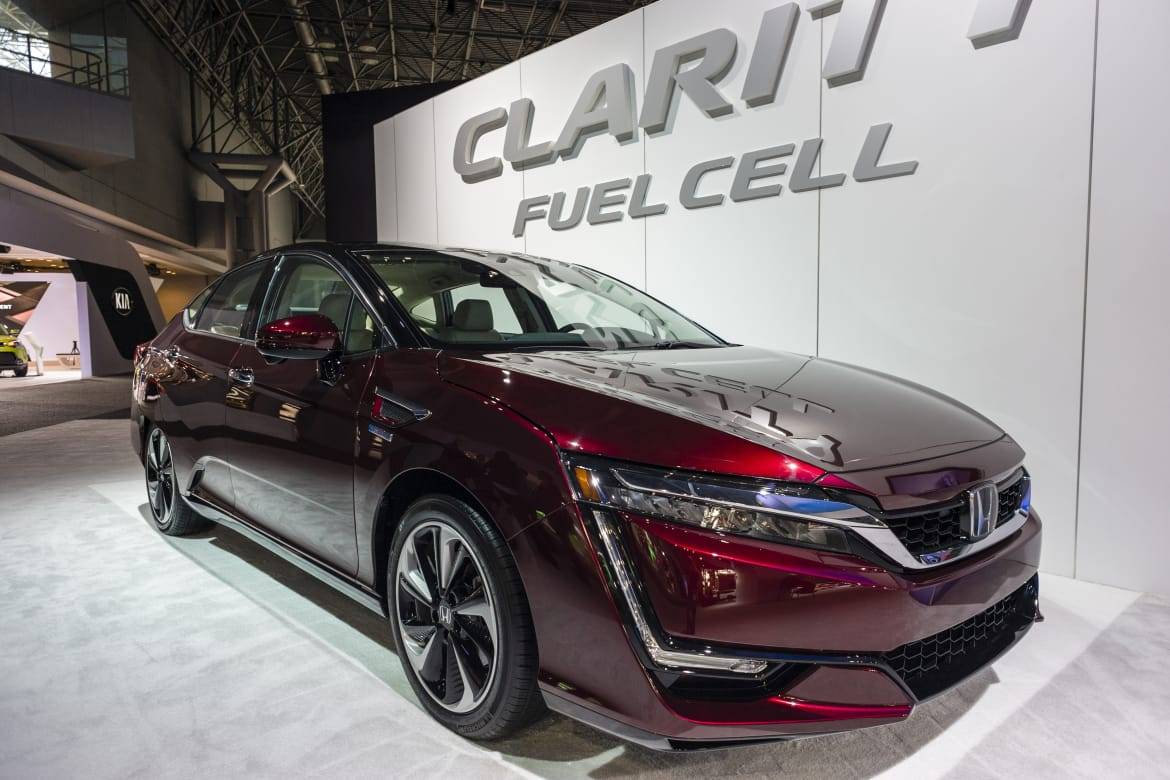Honda EV SUVs Coming as 2024 Models, Fully Electric Lineup by 2040


Hot on the heels of Earth Day, Honda announced an acceleration of the company’s plan to move its entire global portfolio of vehicles to a fully electric showroom by 2040. The goal is a lofty one, especially considering that Honda only sells one fully electric vehicle currently: the foreign-market Honda e micro car (it discontinued its only U.S. electric car, the limited-volume Honda Clarity battery-electric, at the end of the 2019 model year).
Related: Honda e Prototype Previews Electric Urban Commuter Car
How’s Honda Going to Do That?
A new product blitz that combines its own EV and fuel-cell research efforts as well as a partnership with GM to use that company’s next-generation Ultium battery technology will be the approach. By the 2024 model year, Honda says it will introduce “two large-sized EV models” — both SUVs, one a Honda and the other for Honda’s luxury brand Acura — using GM’s Ultium system, models being jointly developed by the two companies. The second half of the decade will then see Honda developing its own “e:Architecture” EV platform to be launched in the North American market first, which will underpin a series of new, as-yet-unnamed Honda and Acura EVs.
Honda says its strategy relies on some technological breakthroughs as well, however, including the ability to mass-produce new solid-state type batteries. Many automakers are looking to this technology as the next step beyond lithium-ion batteries, with the promise of much greater capacity and vastly improved recharging times, and the goal of creating EVs that offer far fewer compromises when compared to traditional internal-combustion-powered vehicles. Honda says its research will lead to a production demonstration line this fiscal year, provided its laboratory research is successful.

The plan’s other component is the expanded use of fuel cells in Honda vehicles. Fuel-cell vehicles are EVs that use hydrogen gas and oxygen to produce electricity instead of drawing only from a battery, emitting only heat and water vapor in the process. Their advantage over traditional EVs is that they can be refilled in minutes instead of the hours it can take to recharge a traditional BEV; the disadvantage is the extreme rarity of hydrogen fueling stations, the packaging of heavy hydrogen tanks into a passenger vehicle and consumer concerns about safety. Honda is betting that hydrogen fuel stations will become increasingly common over the next decade as a renewed interest in green technology and global climate change action spur investment. The company says it plans to do its part by expanding its lineup of fuel-cell vehicles as well as the applications in which they are used, including commercial trucks and stationary and mobile power sources.
What’s Next?
We should see the EVs Honda has planned from the GM platforms in the next couple of years, but they likely won’t be available for sale until 2024, two years after GM comes to market with its own Ultium-powered EVs. This new strategy is a shift away from Honda’s previously announced goals of proliferating hybrid technology across all of its vehicles, a subtle but significant change of its plans from “electrified” vehicles to “electric” vehicles.
Many other automakers have recently announced similar plans to switch their entire pantheon of offerings over to fully electric models, responding to accelerating regulatory requirements in regions around the world that are outright banning the sale of new ICE vehicles over the next two decades. Honda and other Japanese automakers have found themselves behind the curve in this regard, having instead focused a great deal of their efforts on hybrid technology instead of full electric, and are now seeing themselves needing to partner with automakers that have such technologies in order to be current with prevailing trends.
More From Cars.com:
- 2021 Best Eco-Friendly Car of the Year
- More Honda News
- More Green Car News
- Research Electric Cars
- Find Your Next Car
Cars.com’s Editorial department is your source for automotive news and reviews. In line with Cars.com’s long-standing ethics policy, editors and reviewers don’t accept gifts or free trips from automakers. The Editorial department is independent of Cars.com’s advertising, sales and sponsored content departments.

Detroit Bureau Chief Aaron Bragman has had over 25 years of experience in the auto industry as a journalist, analyst, purchasing agent and program manager. Bragman grew up around his father’s classic Triumph sports cars (which were all sold and gone when he turned 16, much to his frustration) and comes from a Detroit family where cars put food on tables as much as smiles on faces. Today, he’s a member of the Automotive Press Association and the Midwest Automotive Media Association. His pronouns are he/him, but his adjectives are fat/sassy.
Featured stories

15-Year Car Loans Aren’t a Thing, But Americans Are Getting More Comfortable With Long Loan Terms

2025 Kia Telluride Review: Rougher Roads Ahead



